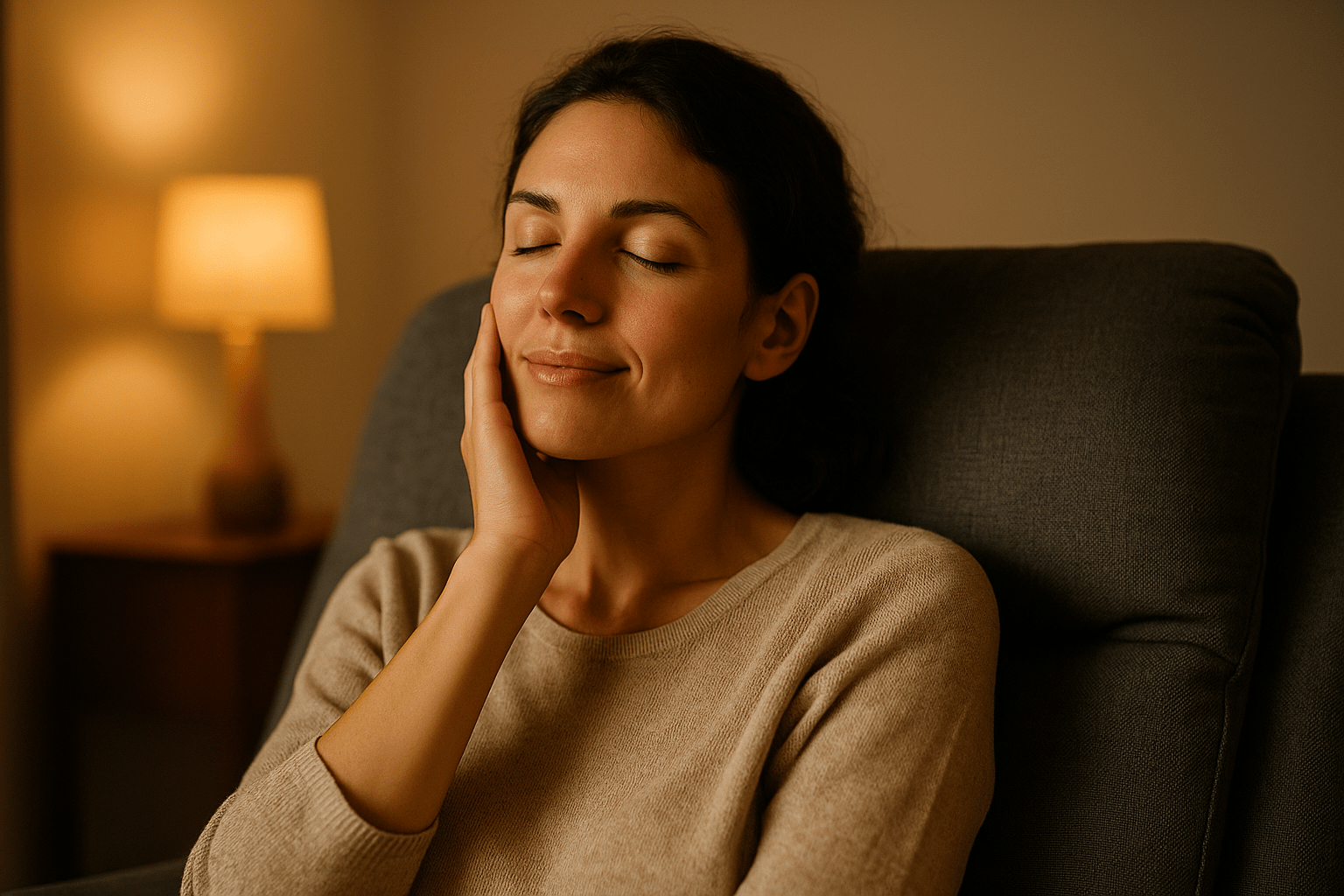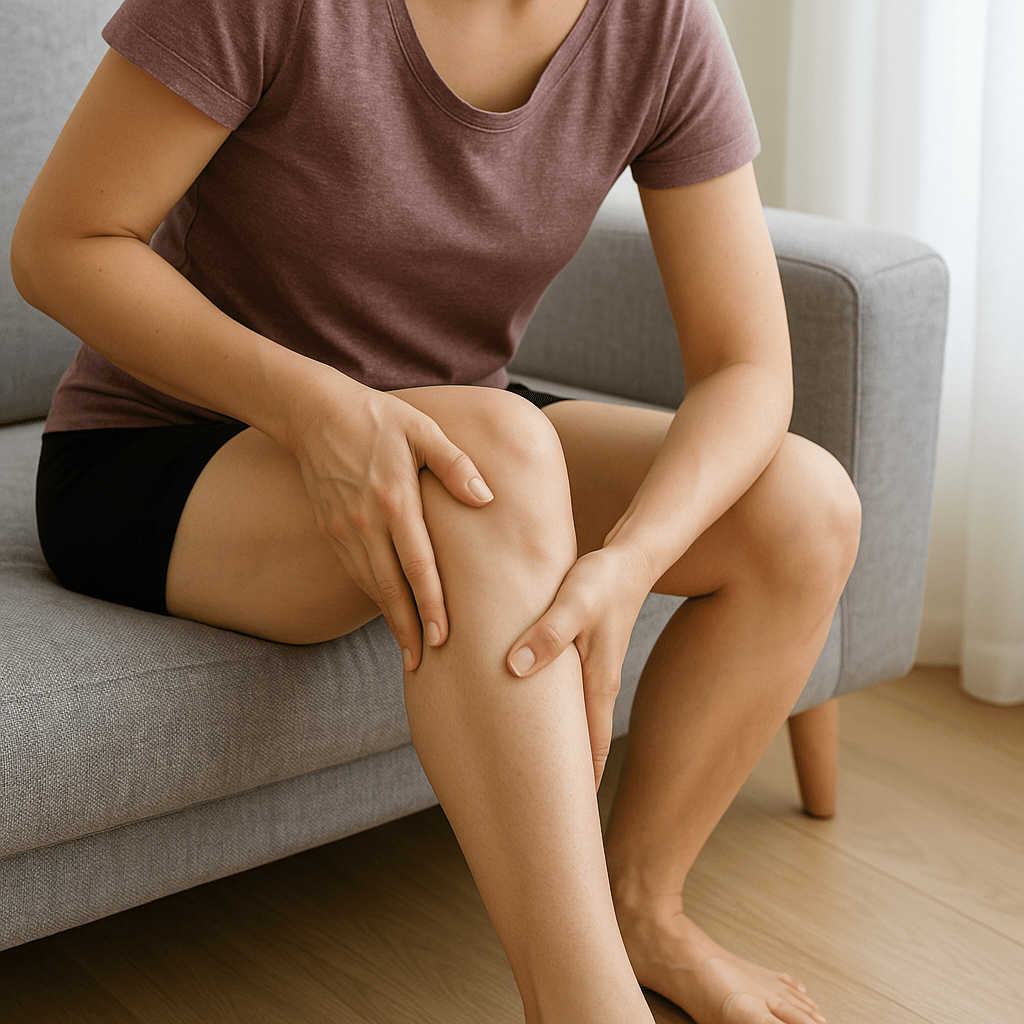Shiatsu massage: background and procedure of the traditional form of massage
Did you know that Shiatsu, a form of massage deeply rooted in Japanese tradition, literally means "finger pressure"? This fascinating technique offers far more than just relaxation and has been elevated to an art form in its own right. The aim of Shiatsu massage is to increase physical and emotional well-being through targeted pressure and touch. Similar to other traditional massage techniques, this is based on a broad spectrum of effects, which you can find out more about in our article "From head to toe: where massages can help". In this article, we take a look at what exactly Shiatsu is. How does a treatment work and how often can or...


Did you know that Shiatsu, a form of massage deeply rooted in Japanese tradition, literally means "finger pressure"? This fascinating technique offers far more than just relaxation and has been elevated to an art form in its own right.
The aim of Shiatsu massage is to increase physical and emotional well-being through targeted pressure and touch. Similar to other traditional massage techniques, this is based on the broad spectrum of effects that you can read about in our article "From head to toe: where massages help" to find out more.
In this article, we look at what exactly Shiatsu is. How does a treatment work and how often can or should you use it? To what extent can modern aids such as massage chairs contribute to this form of treatment?
Let's embark on a journey of discovery that will enrich your understanding of bodywork and perhaps even transform your next massage experience.
What is Shiatsu? Background, life energy and the art of healing
The term "shiatsu" is made up of the Japanese words "shi" (finger) and "atsu" (pressure). But behind this seemingly simple term lies a comprehensive healing method that treats the body and mind as an inseparable unit. body and mind as an inseparable unit. inseparable unit.
The philosophy behind Shiatsu is based on traditional Chinese medicine and the assumption that a vital life energy, known as "Qi", flows through our body. This energy moves along specific pathways known as meridians. When Qi can flow freely and unhindered, we are in a state of health and harmony. Blockages or imbalances in this flow can lead to health problems.
The teaching of Shiatsu aims to identify and release these identify and dissolve these energy blockages. Through targeted pressure with fingers, thumbs, palms, elbows or even knees, the meridians are stimulated to harmonize the flow of energy and restore physical and emotional balance. This in-depth interaction not only promotes physical health, but also has a positive effect on the emotional and mental state.
However, a Shiatsu massage is about much more than just applying pressure. It is a holistic approach that body, mind and soul into harmony. soul. How exactly does this work and what exactly does a Shiatsu treatment involve?
Preparation and procedure: Shiatsu, a holistic approach
Before a Shiatsu session begins, care is always taken to ensure that you are in a relaxed and receptive state. The room where the massage takes place should be quiet and warm to create an atmosphere of relaxation. You will usually be asked to wear comfortable clothing, as Shiatsu is usually applied through clothing.
The session often begins with a conversation in which the Shiatsu practitioner discusses your needs and possible health problems with you in order to customize the treatment. You then lie down on a mat on the floor while the practitioner begins to assess your body and energy flows.
Body positions and techniques in the focus of Shiatsu treatment
Shiatsu involves a number of techniques, including pressing, kneading, tapping and stretching, which are also known from many other forms of massage. These are gradually applied to different areas of the body, particularly along the meridians. The practitioner uses their thumbs, palms, elbows or knees depending on their sensitivity and your individual reactions, which they keep an eye on. This ensures that the right amount of pressure is always applied.
During the session, you will be placed in different positions, such as on your back, stomach or side, and sometimes in a seated position. This variety of positions allows the practitioner to better reach different parts of the body and stimulate specific meridians. The gentle pressure of the last touch on your skin subsides and the treatment is over. Or is it?
After the session: The effects of Shiatsu on the body
After a Shiatsu massage, many people report a feeling of deep relaxation and renewal. However, the effects are not only immediate; they can also have long-term health benefits. By stimulating the meridians and promoting a harmonious flow of energy, Shiatsu can help to improve physical and emotional balance, reduce stress and tension and promote general well-being.
It is not uncommon for certain emotions to surface after a session. Physical sensations are also not uncommon, as Shiatsu can also have a detoxifying effect. It is therefore often recommended to drink plenty of water after the session and to take time to experience the full effect of the treatment.
Various emotions are perceived, such as a feeling of relief, joy, calm or sometimes sadness and melancholy, as emotional release can be part of the healing process. The reactions are very individual and usually reflect the process of inner healing and cleansing that is stimulated by the Shiatsu treatment.
This raises the question of whether this profoundly natural experience, which brings us so close to man, biology and spirit, can also be experienced technically.
Reading tip: Not relaxed after a massage? Find out what muscle pain after massages is all about and how you can avoid it in this article.
A comparison: Shiatsu vs. massage chair
There is no question that both Shiatsu massages and massage chairs claim unique benefits. Shiatsu offers a personalized treatment that focuses on your specific needs and energetic blockages. The focus is on human touch, which supports both physical and emotional healing processes.
Massage chairs, on the other hand, are characterized by their availability and consistency. They offer different intensity levels and massage types that can be tailored to personal preferences. Although they don't offer the intuitive customization of a therapist, they are a practical choice for regular treatments to promote your well-being.
Extensive massage techniques such as tapping, kneading, stroking and also heat treatments are already common functions. They can be applied in your preferred strength and to almost all areas of the body, which often comes very close to a manual treatment.
Both options have their place in the spectrum of wellness offerings. While Shiatsu enables profound, personalized healing, massage chairs offer comfortable relaxation options that are available at any time, without any loss in the intensity of the treatment, for example due to the therapist's fatigue. Massage chairs are a compelling alternative to manual Shiatsu massage, especially in terms of their adaptability to modern lifestyles.
Reading tip: Are you interested in a massage chair, but unsure whether it's worth buying? Then read our article: "Is a massage chair worth it?"
Frequency and timing: How often should you have a Shiatsu massage?
Shiatsu massage naturally focuses on your individual needs, your state of health and your personal goals. Our recommendation is to rely on your body's signals and find a rhythm that suits you.
Some people benefit from a weekly session, while for others a monthly massage is sufficient to reduce stress and relieve muscle tension.
The effect of Shiatsu is considered to be progressive. Regular sessions can help you to promote continuous balance, well-being and a harmonious flow of energy. Frequent treatments are therefore absolutely fine as long as there are no serious reasons not to do so.
Contraindications: When should you avoid a Shiatsu massage?
Shiatsu is a wonderful method to promote relaxation and healing, but there are situations where caution is advised:
- Pregnant women,
- People with certain medical conditions such as heart disease or acute infections
- and those who suffer from skin diseases,
should consult a doctor before a Shiatsu treatment.
It is also advisable not to have a massage if you have a fever, immediately after an operation or in the case of acute injuries so as not to put additional strain on the body.
It is crucial that you inform your therapist of any health restrictions so that they can ensure a safe and appropriate treatment. The same applies to massage chairs; pay attention to physical signals and talk to the doctors treating you about whether a massage is suitable for your individual situation.
Reading tipYou are pregnant and want to know, Which massages are suitable for you? Find out in our article.Does health insurance cover the costs of Shiatsu massages?
In Germany, the assumption of costs for Shiatsu massages by health insurance companies is the exception rather than the rule. Most statutory health insurance companies do not directly cover the costs of Shiatsu treatments in their standard tariffs. However, there are some insurance companies that offer a partial subsidy as part of bonus programs or individual health benefits.
It is also helpful to talk to the Shiatsu practitioners in advance, as some therapists may be familiar with the billing modalities of various health insurance companies. They can give you valuable tips on how to apply for reimbursement. Ultimately, the coverage of costs depends heavily on your health insurance company and your tariff.
Experience the art of "touch"
A Shiatsu massage is a journey that goes beyond mere touch, delving deep into the wisdom of Eastern philosophy and harmonizing our physical and emotional balance. This art form, which activates the Qi through targeted pressure along the meridians, not only offers relaxation, but also promotes our body's self-healing powers.
With the support of modern technology, such as massage chairs, this traditional practice can even be integrated into our everyday lives, bridging the gap between ancient healing methods and contemporary comfort. Shiatsu truly leaves an individual "fingerprint" in the vast landscape of massage techniques.

Co-founder and Managing Director of Massage Chair World. With his expert knowledge and industry expertise, he helps private individuals and companies to find the right massage chairs for relaxation, health and vitality. The individual expert advice is provided both by telephone or video chat, as well as in the exhibition outside Stuttgart.




